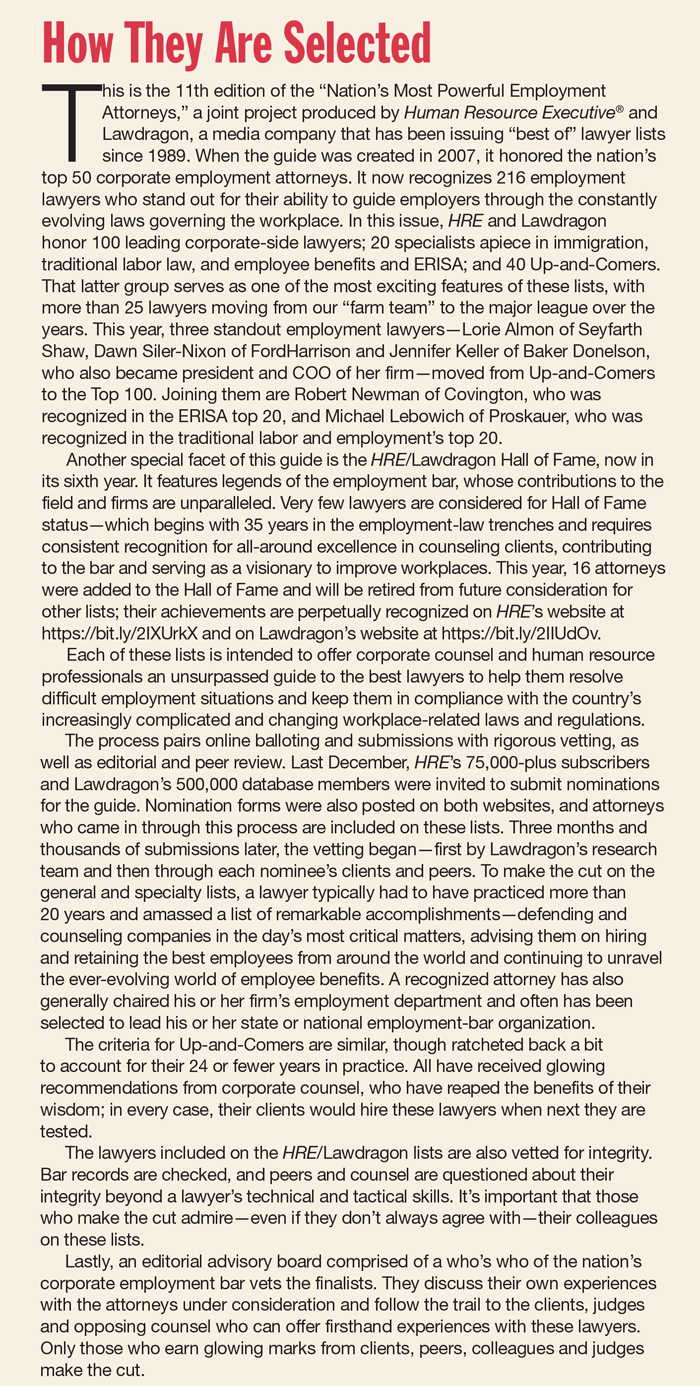It all began in earnest when a succession of women stepped forward to out Hollywood mogul and alleged serial sexual harasser Harvey Weinstein. In a short time, the #MeToo movement encouraged victims of sexual harassment, including in the workplace, to show solidarity.
#MeToo was launched by activist Tarana Burke in 2006 but gained momentum last year when it was mistakenly attributed to actress Alyssa Milano, who used the hashtag on social media in support of friend Rose McGowan, an initial Weinstein accuser. As more and more accused offenders made headlines as workplace harassers or worse (Weinstein has been accused of rape by some women), the groundswell began. Today, the movement that picked up steam highlighting harassment in fields such as the creative arts, journalism and high-tech is now making its impact felt within practically every business sector.
There also seems to be a disconnect in perceptions among HR leaders and workers. A January 2018 report from the Society for Human Resource Management, part of the organization’s “Harassment-Free Workplace Series,” found that three out of four non-manager employees who experienced harassment did not report it. At the same time, 57 percent of HR professionals said that unreported sexual harassment occurs “to a small extent.”
Human Resource Executive® reached out to five of the 100 Most Powerful Employment Attorneys for 2018 to get their perspective on how HR leaders can harness the #MeToo movement to help stem the tide of workplace sexual harassment.
Accountability: Reporting Systems are Broken
Mario Barrera, a repeat winner and partner with Norton-Rose Fulbright in San Antonio, says a prime reason that workplace sexual harassment remains prevalent is because employees have very little faith in most sexual-harassment reporting systems and processes.
“It’s mind-boggling,” he says. “I’ve been doing this for 34 years and, if you would’ve told me when I started practicing law in 1984 that we would still be talking about sexual harassment at the extent and level that we’re talking about in 2018, I would have thought you were crazy. Yet, here we are, almost starting fresh.”
“Clearly, when you have people coming in and saying this happened to them and nothing happens as a result, you can say that there’s a problem with the current reporting system,” Barrera adds.
Lisa Damon, also a repeat winner and partner and national chair of the labor and employment area of Seyfarth Shaw in Boston, says organizations need to ensure that HR isn’t just empowered on paper–but also truly feels empowered–to take appropriate action on claims of sexual harassment.
“Many of the breakdowns we’ve seen in these types of matters aren’t structural, but rather they are cultural,” Damon explains, adding that all of this presents an interesting twist on the “human” in human resources. Human tendencies to avoid conflict, combined with the cultural norms of organizations, she says, have sidelined claims that HR should have handled.
Without HR leadership, she says, some employees have created their own forums and incident-reporting vehicles, designed specifically to bypass HR.
“That’s a very dangerous breakdown of organizational trust,” Damon says.
According to Damon, even employers that haven’t dealt directly with #MeToo situations are being impacted. There has been a halo effect, she says, as employees everywhere question their organizations’ integrity and ask themselves, “How would my company handle this?”

Juan Enjamio, labor and employment head and managing partner of the Miami office of Hunton Andrews Kurth LLP, believes that one of the main reasons so many cases of sexual harassment go unreported is that many employees do not see a culture of respect and accountability fostered from the top-down. That lack of leadership, he says, suggests that an accusation, even if well-founded, won’t result in effective punishment.
Management needs to show that a commitment to eradicate sexual harassment is not just a legal requirement fulfilled by periodic training. That can be illustrated by consistently prompt investigations and the administration of effective penalties where appropriate, he says.
“While training is an important and necessary component of any anti-harassment policy, it must be accompanied by effective and timely follow-through, including investigating promptly and holding perpetrators, even top management, accountable,” says Enjamio.

Time for New Thinking on Training
The EEOC’s 2016 Select Task Force on the Study of Harassment in the Workplace report found that much of the workplace training done on the issue in the last 30 years has failed as a prevention tool. It’s time, the EEOC says, for “new and different” training approaches.
That’s no surprise to repeat winner Jonathan Stoler, a partner in the labor and employment practice at Sheppard Mullin in New York. Stoler says HR leaders need to revamp training if the #MeToo movement is going to actually lessen workplace sexual-harassment claims.
Since Title VII of the Civil Rights Act of 1964, which prohibits workplace discrimination, was enacted, employers have understood the importance of periodic training for staff and supervisors, Stoler says. But over time, employees and employers have become somewhat desensitized to that training, and it has largely become a “check-the-box” obligation that falls well short of its intentions.
“Much of the training that some employers use is very similar in that they’re sort of these boring PowerPoints that explain what the law is, identifying what sexual harassment is,” Stoler says, noting such sessions miss the mark on promoting tangible steps for creating a “tolerant, respectful, workplace environment.”
Instead, Stoler says, today’s training must be truly interactive. It should be conducted in relatively small groups and in a live session, as opposed to the ineffective web-based, mouse-click training modules in which participants just go through the motions.
“Our clients want to make sure that people are not only checking the box and saying they went to training, but instead are really getting something out of it,” he says. Stoler adds that what HR departments and employers have lost sight of is that, to be effective, training needs to resonate with employees.
It should offer an experience that brings real workplace situations to life, allowing employees to say, “Hey, you know, I’ve seen that situation before,” or “I recall somebody making a comment like that,” Stoler says.
“It means creating a scenario that perhaps either they’ve experienced or that they’ve seen or heard, and then educating them on how to address it, how to remedy it, how to prevent it,” he adds, noting that most HR departments are well-intentioned when it comes to training but don’t have a strategy to drive success.
“What has gotten stale or where [HR leaders] have grown comfortable is in the way they are delivering those messages to employees,” he says. “It’s amazing that after practicing for 25 years, giving these training sessions to hundreds and hundreds of clients, I’m just as busy today on sexual-harassment cases as I was 25 years ago.”
Best Practices: Ways to Make Change
Apart from training aimed at prevention, Enjamio from Hunton Andrews Kurth advises that organizations have multiple channels for employees to register complaints if a situation does arise. He says this practice can foster trust that the employer will investigate promptly, thoroughly and in a neutral, independent manner.

Creating and communicating a strong reporting system can encourage empowerment, Seyfarth Shaw’s Damon says, and HR should also exhibit “soft skills” when fielding claims. Avoid relying on tactical and clinical responses, which can blunt employee confidence and encourage them to explore avenues outside of HR, she says.
Julianne Story, a partner with Husch Blackwell in Kansas City, Mo. (and a first-timer on the Most Powerful Employment Attorneys list), says it’s important for accusers to truly feel that their complaints are being heard. “They need to know that they will be supported or protected.”
Employees should be educated about concrete consequences for the accused if the accusations are substantiated. Anti-retaliation guarantees, Enjamio adds, should not only be written into formal policies, but also clearly communicated in anti-harassment training.
Another best practice, from Norton-Rose Fulbright’s Barerra, is looking to outside expertise. For example, he says, employees may feel more comfortable reporting instances of sexual harassment if their employer uses a vendor with a toll-free anonymous tip line. Such complaints could then be forwarded to the employer’s HR department for authentic action.
When claims do arise, they need to be treated as learning experiences for the employer and HR.
“Figure out what went wrong, what could’ve gone wrong and how we correct those problems,” Barerra says. “It’s not enough to say, €˜Our process worked this time.’ The issue is: Could the process have worked even better?”
That effort can be fueled by the #MeToo movement, Story says, noting it’s a cultural revolution that is redirecting attention onto the need for action–including by HR leaders.
“Unfortunately, the people that I deal with in HR may be well-intentioned, but they also are very, very busy and may not have had that €˜seat at the table’ required to impact this issue the way they should,” Story says. “Every CEO and top leadership executive worth their salt needs to step forward and say, €˜We’re just not going to tolerate it. I don’t care if you’re second in command or you’re the lowest-paid person in the company. If you do it, you’re out.’ ”

